DENMARK & NORWAY: ROYALLY RICH IN BREATHTAKING BEAUTY, FROM CASTLES TO FJORDS
PART 2: DANISH ROYALTY– FROM THE QUEEN’S RESIDENCE TO HAMLET’S CASTLE TO KAREN BLIXEN’S SANCTUARY.
In PART 1: VIKINGS DID NOT HAVE HORNS ON THEIR HELMETS, we began our three week trip by spending a week in Denmark, with a brief foray into Germany, with friends.
Copenhagen is a worldly metropolis without pretensions, much like the royal family who are called by their first names, or the 50% of the population who daily commute by bicycle and think nothing of leaning them unlocked against a building wall.
Fashion styles are typically in muted colors and casually sophisticated. Furniture has smooth, clean lines. People are friendly, direct, no-nonsense and unfailingly obey traffic lights. Healthcare for citizens is free, but the taxes are among the highest in the world. Open-faced sandwiches, herring, and Vienna
bread (Danish pastries) are traditional, ice cream is sinfully rich, and bacon is one of their top exports.
Copenhagen, whose name means City of Merchandise, established its financial future 850 years ago from its lucrative business of catching, salting and selling fish. Population of the entire country today is 5.5 million, with 1.6 million living in the city center. Changing jobs is common and considered proper for personal growth, yet one of the most desired positions for young people is to join the Army. Ninety-six percent of the Danish army are volunteers who make 20,000 DK a month, yet the only people authorized to carry weapons are palace guards and the police.
Danes are a people of science, such as Niels Bohr, who taught at the University of Copenhagen and won the Nobel Prize in Physics in 1922 for his explanation of atomic structure and quantum theory. Danes are a people of the Arts, from furniture designer Hans Wegner to Karen Blixen, whose tale Out of Africa was made into a movie starring Meryl Streep, to Hans Christian Andersen, whose grim fairy tales became the inspiration for The Little Mermaid, a statue that attracts tourists from around the world.
The rich cultural diversity of Denmark has twice brought my husband Russ and me to visit. The first time I wrote about it in Scandinavian Adventures: Denmark, Sweden & Iceland, published in March, 2016. This time we spent one week with our local friends, Else and Erik Kaaber, exploring places unknown to many tourists before they dropped us off to begin an Odysseys Unlimited two-week tour called Norwegian Splendor with Copenhagen.
This was our second direct-booked tour with Odysseys. The first was described in my four-part series, Spain and Portugal: How Centuries of Religious Battles Led to Architectural Wonders, Savvy Cuisine, Fragrant Wines, And The Heroics of Which Novels Are Written, published in June and July of this year. Each tour was led by professional, knowledgeable local Tour Guides. We visited historical sites we’d have never heard about, ate foods we might not have otherwise tried, stayed in historically famous upscale lodging, and were led through wide swaths of countries for which transportation details would have been a nightmare to arrange.
This tour began in Copenhagen before heading to the legendary scenic panoramas of Norway.
Where we stayed:
The 169-room Scandic Palace Hotel occupies a prime location in the heart of downtown Copenhagen, next to City Hall Square and across the street from Tivoli Gardens, a 175-year-old amusement park that is reputed to have been the inspiration for Walt Disney’s Disneyland. Built in 1910, Scandic Palace Hotel is a designated Protected Landmark built in Art Nouveau style by Architect Anton Rosen. European hotel guest rooms are not known for being spacious, but Odysseys had arranged for us to be placed in Superior Rooms, so this one was. We had a tub with a rain showerhead, comfy bed and several pillows. The latter is worth noting because the majority of the hotels on the rest of the tour had but one pillow apiece. We were pleasantly surprised to find shelves for toiletries and a room safe. (Some of the later hotels did not have room safes.) Our room included a horseshoe-shaped stone balcony, from which I could see a wide theater screen in the plaza below playing a nonstop loop for Game of Thrones season seven. The hotel’s wide-stepped staircases were marble. Corridors were exceptionally wide because wealthy women in the early 20th century wore large gowns. The wide corridor prevented them from hitting one another’s dresses while passing by. Russ and I were struck by the heavy double doors to guest rooms. We thought the exterior door served as a sound block but then learned it protected the inner door’s original silver door knobs forged by silversmith George Jensen.
What we saw:
You can’t visit Copenhagen without making it by The Little Mermaid sculpture. The statue may be short in stature as she sits on a rock at Langelinie in the harbor, but it has become an iconic symbol of Copenhagen and Denmark. Legend has it that Hans Christian Andersen came to Copenhagen at 14 to become an actor. In 1836, he wrote a fairy tale about a mermaid’s failed love after being rejected himself. His original tale did not have the happy-ever-after ending that Walt Disney later gave it when he turned it into an animated film in 1989. The bronze statue created by Edvard Eriksen debuted in 1913.
Built in 1928, Christianborg Palace is the official residence of Queen Margrethe II. There are several buildings in the complex, including one that King Christian IV, who was in charge of the largest navy, built as housing for palace employees. It is now used by the military. The complex also contains the Danish Parliament, the Danish Prime Minister’s Office, and the Supreme Court of Denmark. This is the third palace of this name built on the site after the others burned down. Danish flags with tails fly over each of the buildings, a sign that these are official government properties.
The rooms in the Queen’s palace are expectedly ornate. There’s a small book library which the Queen mandated must also be open to the public who show proper ID. Two large crystal chandeliers, gifts from Norway, hang in one long ballroom, while two other decorative chandeliers adorn another. The Party Hall, only used for official events, is lined with bright colored tapestries. After the originals were destroyed by fires, the city collected $50 million as a 50th birthday for Queen Margrethe II to have new ones created. She worked in tandem with Professor Bjorn Nergaard to conceive the designs of the tapestries, which represent 1000 years of Danish history in intricate detail.

tapestries that Queen Margrethe II and Professor Bjorn Negaard designed depicting 1000 years of Denmark history
In 1606, King Christian IV built Rosenborg Castle as his country summer house. The Castle Gardens are the oldest and most visited park in central Copenhagen. We watched young soldiers practice their marching, not far from the Rosenborg Barracks, which is home to the Royal Guards. Of course, what attracted most of our 24 tour members was getting to see the Crown Jewels up close and to hear some of the history. The Crown Jewels story began with Christian VI’s wife, Queen Sophie Magdalene. She specified in her will that her jewelry be “with the crown” and not bequeathed to any one person. Over the years, the four sets of jewelry in the collection were redesigned. The last time was in the 1840s by Queen Caroline Amalie. Today, the Crown Jewels are always worn at the New Year Reception, and for special state visits. For anyone who knows I love bling, some of these pieces would do quite nicely, thank you.
The 128-year-old Danish Design Center (Designmuseum Danmark) was not part of the tour’s agenda, but it was a must-do on Russ’ list. I had no idea what we were walking into, thinking I’d be stuck walking behind him as he ogled the 110 chair designs on display or blond wood armoires, or sleek desks and dining tables. How wrong I was.
OK, there were certainly rooms filled with all that, but we were also quite fortunate to see the special haute couture exhibition of Erik Mortensen, considered to be the closest Denmark has come to the Paris Fashion world of designers. There were over 50 haute couture gowns on display in his “I Am Black Velvet” exhibit, each a stunning beauty. What made the collection even more striking were the video clips airing on the walls, shot from fashion shows with elegant models strutting down the catwalk wearing these same pieces. Neither had I realized Danes were so prominent in textiles and fabrics, or how much influence Japanese art inspired Danish arts until I walked through the collections and read the signage.
She went by many names. Karen Dinesen. Izak Dinesen. Tania Blixen. Karen Blixsen. People who can’t think of her name may remember the book which became the critically-acclaimed movie Out of Africa. Starring Meryl Streep, the book was written from Karen Dinesen Blixen’s personal experiences. She was born in 1885 and died in 1962 at 77. As we wandered through her birth home in Rungstedlund, where she fled after her husband gave her syphilis and then divorced her, it was apparent that her circumstances failed to drain her fertile imagination. It was here that she wrote some of her other memorable books, such as Seven Gothic Tales and Babette’s Feast.
If you are a fan of Shakespeare, you might call this medieval fortress, Hamlet’s Castle. The actual name is Elsinore Kronborg Castle. It sits on a narrow slit of land in Helsingør (Elsinore), North Sealand, between Sweden and Denmark, where it could have halted enemy attacks and for over 400 years, allowed the Danes to collect a toll from ships wishing safe passage to parts beyond. In its heyday as a military castle, you’d take an immediate right into the fortress. The top floor was reserved for soldiers. The floor below for prisoners. Even now, as we walked single file through the narrow, dark and dank curved rock walls to where the cells were, it was not difficult to realize few prisoners could have long survived the 38 degrees the dungeons maintained.
First built by Erik VII in the 15th century, Kronborg Castle was later rebuilt by Frederick II in Dutch Renaissance style. In the 17th century, it was once again reconstructed, but along the lines of the original structure. When we visited, period costumed actors re-enact scenes from Hamlet, both in the castle and outside in the open air courtyard, where full plays are often presented during the summer. Kronborg became a UNESCO World Heritage Site in 2000.
One of the cutest villages (if a village can be called cute) we toured was Dragør Havn, which translates to “drag your boats.” Houses are mostly painted yellow and lean into one another. Roofs are either thatched or bear rust-colored tile. The only flowers I saw were hollyhocks; in reds, white, and pinks. They spilled from the exterior base of homes into the narrow cobbled streets that weren’t much wider than a path, creating an impression of beauty flowing wildly free.
As enchanting as the appearance of the village is, two items made it vastly more interesting.
One was the World War II saga of how the community banded together to save the lives of Jews. The numbers vary. Our guide said 750, which was impressive enough, but I googled the story. According to various sites, the Germans had threatened to wipe out the village’s Jews. More than 8,000 Jews and non-Jewish spouses or family members were boated to Sweden over the course of many nights in 1945. While the numbers vary on how many died during the voyage, were captured or committed suicide, one fact remains indisputable: Denmark had the fewest Jews die in the Holocaust of all European countries. Our local guide, Bjarne Johnson, proudly boasted that 200 of those rescued returned after the war and got back their jobs and apartments. He added, “You don’t ask someone in Dragør Havn what his religion is. They consider themselves Danes, first and foremost.”
The second reason Dragør Havn stood out is that I’ve rarely seen Russ eat chocolate ice cream. At an ice cream shop that touted it was the only shop continuously running from even before World War II, he not only tried the chocolate in a warm waffle cone right off the iron press, but he went back for a second. He has since raved that it was the best chocolate ice cream he’s ever had!
Where we ate:
Restaurant Paafuglen (Peacock) in Tivoli Gardens seemed an interesting choice for our first night together as a group, but the 175-year-old amusement park only enhanced the ambiance of twinkling lights and the hum of excited voices that drifted into our private dining room. Food and service were excellent. Paafuglen ended up as one of the best group meals during our tour. Tivoli Gardens is the second-oldest operating amusement park in the world, after Dyrehavsbakken in nearby Klampenborg, DK.
If you’re walking around downtown Copenhagen and are feeling veggie-deprived, pay a visit to Riz Raz. The extensive buffet of salads, grains and vegetable dishes was so yummy that none of felt the need to pay extra for the protein entrée that could have been added. We sat outside the first night, enjoying the heat lamp that kept off the evening chill. The food was so delish, even to my meat-loving husband, that we returned a second night and sat inside, closer to the buffet (as if we needed any encouragement).
What we learned:
While Odysseys’ Tour Directors, at least those we’ve had, are well-educated, not easily ruffled, and well-prepared with suggestions for what to do in one’s free time because they are from the areas they are guiding, additional local guides do much to fill in pertinent details for specific sites. In Copenhagen, Bjarne Johnson’s standup comic timing and sense of humor while delivering solid content kept us entertained while being educated. The time Bjarne had lived in Minnesota came out each time he ended a sentence with, “Don’t ya know?”
Don’t ya know and Uffda became often-voiced phrases throughout the tour. I had asked our Norwegian-born Tour Director, Karin Hansen, if she was familiar with Uffda, as a friend of mine wanted a souvenir with that saying. She said it’s not a popular contemporary saying and when used, it’s mostly by women. The translation is like Oy Vey, or OMG. For whatever reason, many of our group—male and female–shouted Uffda whenever something struck us as funny or momentous, like praying our tour bus would safely maneuver the hairpin turns on Norway’s slim mountain roads. Uffda evolved into an exuberant cry. Last time we shouted it in Norway, the locals just rolled their eyes and laughed.
Denmark has the highest taxes in the world, paying a uniform 40% tax, but here’s why the citizens are (generally) happy with doing so. Healthcare and education is free, even up through higher education. The state pays all parents a fixed amount per child until said child is 18. From then on, that child also can receive Student Support of 1200-6500 Danish Kroner per month, depending on the age and education and the parents’ income if that child is still living at home.
Soldiers and teachers are public servants and receive life-long pensions, as will their widows/widowers, on top of the OAP. Rookie soldiers make roughly DKK 20,000, but get extra every month for taking various courses and 50% bonus for going on missions.
Refugees even if they are ultimately not able to obtain citizenship, are paid to attend school to learn both Danish and English, a necessity for finding a job. There are only two ways for refugees to gain permanent asylum: if they are in peril and couldn’t safely return home, or they have a specific skill that would be difficult to find in someone already a citizen.
Fifty-two percent of the population is single, yet 54% of marriages end in divorce. Most people are married in City Hall, not a church. Denmark is not a religious country, though most people pay dues to churches. It is the only way they are entitled to a burial.
Until this year when Norway captured the title, the Danes have been considered the happiest people in the world. Arts are so important to the populace that they are fully supported by taxes. The Copenhagen Opera house still in the construction stages will boast 1000 rooms, with five floors below ground level and nine above. The main concert hall will have 1703 seats.
Only the rich could afford white paint when wealthy neighborhoods were being developed. White paint is still visible proof that one can afford to live in neighborhoods such as Hellerup, whose residents boast the highest income bracket in Denmark.
The average family condo or apartment in Copenhagen would run about $650,000 USD for a place that’s no bigger than 1200 square feet. Yet, the job and housing market are HOT. About 1000 people move into the city each month, so prices are unlikely to drop.
Our tour group drives by the original Tuborg beer plant. The Danish brewing company was founded in 1873 by Carl FrederikTietgen. Since 1970, it has been part of the Carlsberg Group.
Here’s an interesting tidbit, our guide Bjarne relayed. English became the preferred second language of Denmark thanks to rock & roll music. Everyone listened and sang the words. The only time we heard music other than American pop tunes was at Tivoli Gardens for a rock concert. The band began in Danish, but swiftly turned to American songs.
We bid goodbye to Denmark when our group boarded the DFDS ship Pearl Seaways, a cruise liner for 1800 passengers masquerading as an overnight ferry, that would take us to Oslo, Norway. The ride was smooth. The family-style dinner buffet was tolerable. There are three other restaurants available, from casual pizza and pasta to a more formal steakhouse for an extra fee. Onboard entertainment is akin to your teen’s middle and high school friends without any discernable talent, deciding to “put on a show.” That said, when I popped in for a few minutes to see if the entertainment was enticing, the room was packed with families. We hid away in the Red & White Lounge where many of our group had gathered to drink and laugh.
What we learned on that trip set us up for success later on. Norway has state-controlled wine and alcohol shops. Norwegians prefer beer and rarely drink anything else except for celebrations. It you do want to buy any alcohol, it must be done in one of the wine-monopoly stores, of which there are very few, and those are located only in the largest cities, or, lucky for us… in the Duty Free Shop on the Pearl Seaways. Our wine purchases, and possessing an opener, carried us through many days until the next opportunity to replenish our supply in Bergen occurred.
www.scandichotels.com
www.tivoli.dk/en
www.paafuglen.dk
www.rizraz.dk
www.kongernessamling.dk/en/rosenborg
www.designmuseum.dk
www.visitdenmark.com/denmark/karen-blixen-museum
www.visitdenmark.com/north-zealand/attractions/kronborg-castle
www.dragoer.dk
www.dfdsseaways.com
PART 3: STEPPING INTO THE FAIRY TALE WORLD THAT IS NORWAY–GOAT FARMS, SKI RESORTS, FJORDS AND WHITE-KNUCKLE MOUNTAIN ROADS
Photos by Russ Wagner (except for any photos of us)
Karen Kuzsel is a writer-editor based in the Orlando area who specializes in the hospitality, entertainment, meetings & events industries. She is an active member of ILEA and MPI and is now serving on the 2016 – 2017 MPI Global Advisory Board for The Meeting Professional Magazine for the second consecutive year. She is a member of the Society of Professional Journalists. Karen writes about food & wine, spas, destinations, venues, meetings & events. A career journalist, she has owned magazines, written for newspapers, trade publications, radio and TV. As her alter-ego, Natasha, The Psychic Lady, she is a featured entertainer for corporate and social events. karenkuzsel@earthlink.net; www.ThePsychicLady.com; @karenkuzsel; @thepsychiclady.


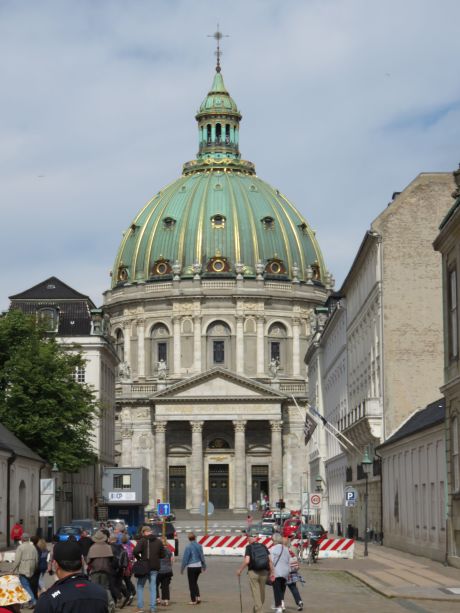





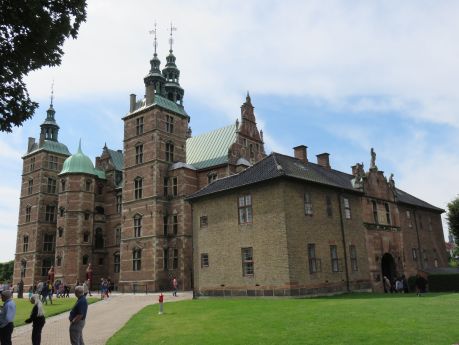
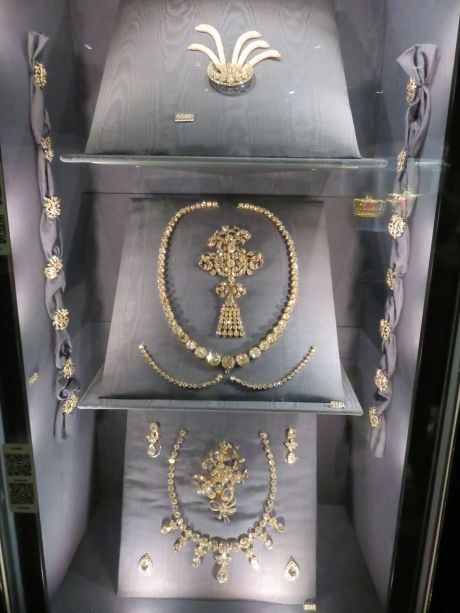
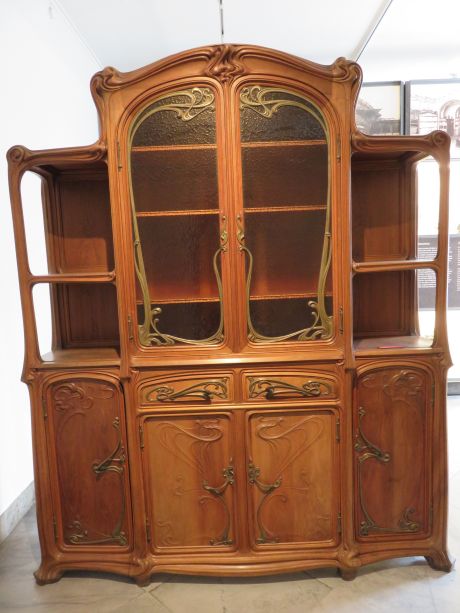
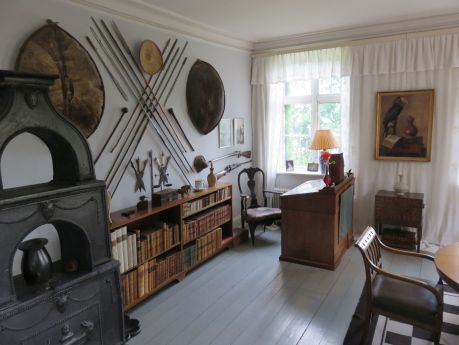
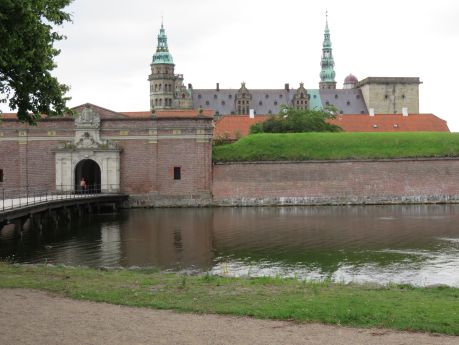

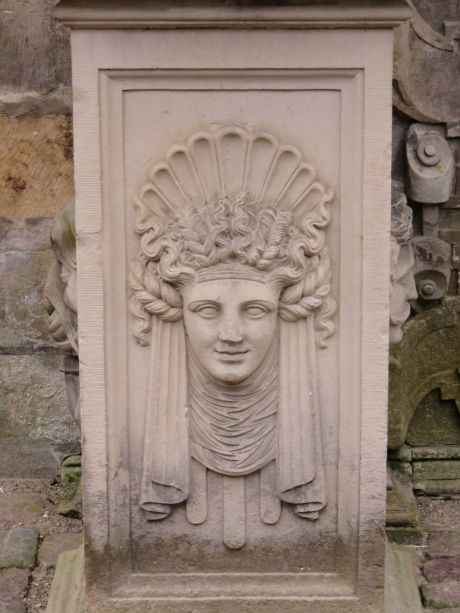
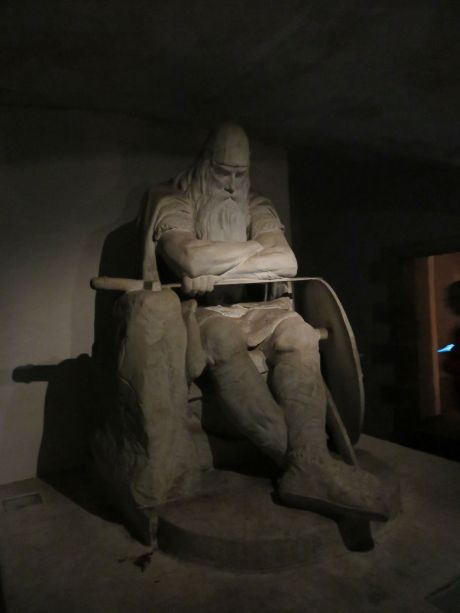


Leave a Reply
Want to join the discussion?Feel free to contribute!